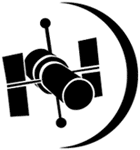
Astrometric information is put into the headers of the final drizzled images produced by the Hubble Legacy Archive. How well the astrometric information is sensical across all of the final drizzled images is the main thrust of this investigation. Datasets from external observations were exclusively used in this analysis. Comparisons were made between the astrometric information extracted from the final drizzled image headers and the total root mean square ranges for both Guide Star Catalogue I and Guide Star Catalogue II and the total root mean square value for the Sloan Digital Sky Survey. The results from this comparison show that the information captured from the headers is indeed reasonable as the astrometric values fall within the ranges and are above the upper limits for Guide Star Catalogue I and Guide Star Catalogue II and greater than the total root mean square of the Sloan Digital Sky Survey. Histograms were created using the offsets and root mean squares of the right ascension and declination that have been added in quadrature. The histograms of the total root mean square show extended tails with large bin numbers. A thorough visual inspection of randomly picked datasets in these extended regions and in regions around the central peak were tested to see whether the datasets either "passed", "failed" or were "undecided".
This document examines systematic properties of source lists generated by DAOphot. These source lists includes astrometric and magnitude information. Since these source lists are from observations that are separated in time several detector parameters can be evaluated such as: change in plate scale, rotation between source lists, perpendicularity between axes within source lists, and an approximate measure of charge transfer efficiency. The ability to measure these quantities from time separated source lists can determine how robustly these source lists are being created.
This document examines systematic properties of source lists generated by SExtractor. These source lists includes astrometric and magnitude information. Since these source lists are from observations that are separated in time several detector parameters can be evaluated such as: change in plate scale, rotation between source lists, perpendicularity between axes within source lists, and an approximate measure of charge transfer efficiency. The ability to measure these quantities from time separated source lists can determine how robustly these source lists are being created.
This document contains the analysis of large mean differential magnitudes. The individual exposures that make up the final drizzled images were analyzed to check if the large differential magnitudes come from the individual exposures themselves or come from the HLA pipeline itself. Investigation shows that these large mean differential magnitudes come from the images themselves and not from the HLA pipeline.